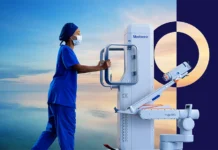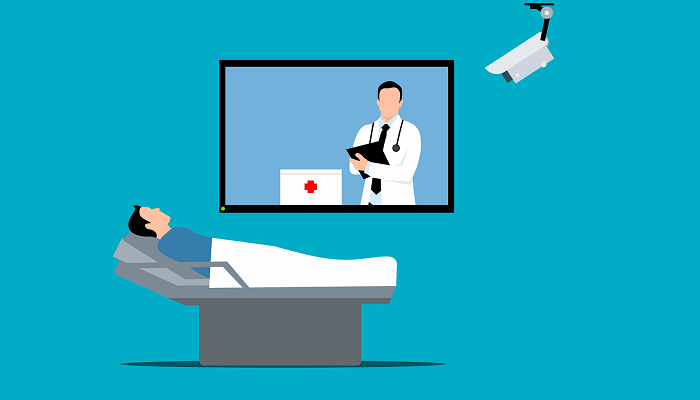Navigating the complexities of chronic lung conditions requires a combination of grit, knowledge, and the right tools. With technological innovations at our side, the horizon for managing these persistent ailments is expanding significantly. Particularly noteworthy are advancements inspired by post-disaster resilience studies—where necessity has mothered invention in ways we’re just beginning to harness for long-term health.
So, what are the game-changing technologies reshaping how we approach chronic lung disease today? This article spotlights five key breakthroughs that aren’t just altering treatment options but are revolutionizing patient care and self-management. Prepare to explore innovations that empower those living with lung conditions to breathe easier in more ways than one.
1. High-Resolution Imaging: Seeing the Unseen
When confronting chronic lung diseases, the maxim ‘knowledge is power’ resonates with undeniable gravity. Enhanced high-resolution imaging technologies have granted clinicians a revealing glimpse into the inner workings of lungs like never before. This advancement forges a path to a more nuanced comprehension of disease evolution and facilitates treatments finely tuned to the needs of each patient.
High-Resolution Computed Tomography (HRCT) stands out by uncovering intricate details once concealed from conventional imaging techniques. Yet, these tools don’t merely provide enhanced visual clarity; they bring the crucial advantage of rapid processing — an asset that’s critical in timely and effective patient care. Fast image processing equips healthcare professionals with near-instant visual data, enabling swift and informed decision-making.
In practice, HRCT has been instrumental in diagnosing conditions like idiopathic pulmonary fibrosis, where every detail serves as a critical piece of the puzzle. By identifying specific patterns of lung damage, treatments can be precisely targeted, enhancing efficacy while potentially reducing side effects. It’s a brand of precision that spells out hope and confidence—key ingredients in managing any chronic condition.
2. Wearable Air Quality Monitors: Breathing Smart
What if you could steer clear of respiratory irritants before they ever reached your lungs? Wearable air quality monitors aim to grant that foresight. These devices can alert users to harmful environmental conditions, such as high levels of pollution or allergens, which are particularly detrimental for those with chronic lung conditions.
Drawing from post-catastrophe studies like those examining 9/11 lung conditions, researchers have identified the need for real-time air quality monitoring. The data harvested has been pivotal in understanding how sudden exposure to particulates and toxins can lead to long-term respiratory health issues.
In response, compact wearable devices now provide individuals with personalized alerts and recommendations to avoid hazardous areas or take precautionary measures. Such technology affords a new level of autonomy, giving patients the agency to navigate their environments more safely and proactively manage their conditions—a form of empowerment that’s both practical and transformative.
3. Telehealth Triage and Consultations: Care Without Walls
The realm of telehealth has dismantled the traditional barriers to accessing healthcare, especially for those with mobility restrictions due to chronic lung diseases. As a paradigm of contemporary care, telehealth triage and consultations provide a lifeline that extends beyond the confines of physical clinics.
This digital platform ensures that distance no longer dictates the quality of care one receives. Pulmonologists can now conduct thorough assessments via video conferencing, reducing the need for in-person visits—a critical advantage for patients whose conditions make travel challenging or risky.
Moreover, this approach isn’t just about convenience; it’s about continuity and adaptive care strategies. Regular virtual check-ups help maintain vigilant monitoring of symptoms, ensuring prompt responses to any adverse changes. Telehealth is thus an indispensable tool in preemptive health management—it keeps medical counsel ever-present and within reach.
4. Artificial Intelligence in Pulmonary Rehabilitation
The integration of artificial intelligence (AI) into pulmonary rehabilitation programs represents a frontier of customized care. Consider the variety of factors that affect a patient’s rehabilitation outcomes—age, disease stage, overall health—and you’ll understand the challenge faced by one-size-fits-all regimes.
AI-driven rehab technologies are revolutionizing this space by personalizing exercise plans down to the finest detail. Algorithms analyze patient data and continuously adjust workout intensity, ensuring each session is aligned with the individual’s current capabilities and goals.
One standout example is AI-powered virtual coaches that provide real-time feedback during exercises. These systems learn from each interaction, creating an evolving training program that responds to improvements or setbacks in a patient’s condition.
But it’s not just about adapting workouts; AI facilitates predictive analysis to forestall exacerbations before they occur. Picture this: an algorithm flags early signs of decline in lung function—a prelude perhaps unnoticed by even the most experienced eye—and prompts preemptive intervention.
It’s clear how pivotal such technology can be in safeguarding against potential crises and maintaining the quality of life for those facing chronic pulmonary conditions.
5. Decentralized Clinical Trials: Research Reimagined for Accessibility
The clinical trial landscape has been revolutionized. The once ubiquitous requirement for multiple hospital visits, a formidable obstacle for those battling chronic lung conditions, is no longer a given. Instead, decentralized clinical trials have remodeled the patient experience by granting them the opportunity to participate directly from their homes.
Leveraging digital tools and virtual platforms, researchers are now able to gather valuable data from afar. This shift not only broadens the spectrum of individuals who can contribute but also diversifies the pool of trial participants—enriching research outcomes with a breadth of real-world patient experiences. This approach not only enhances convenience but also paints a more accurate picture of how treatments perform across varied real-world environments.
The impact is two-fold: patients gain access to innovative therapies without the strain of travel, and science benefits from broader engagement. It’s through such inclusive research methods that we’ll unearth the next wave of breakthroughs in managing chronic lung diseases, ensuring advancements reflect the needs of all those they aim to serve.
As these five technological advancements illustrate, we stand at an exciting crossroads where innovation intersects with individual empowerment—ushering in an era where managing chronic lung conditions is increasingly proactive, personalized, and accessible.
Breathing Innovation: A Future Cast in Hope
The technological terrain for those with chronic lung conditions is one marked by rapid innovation and dogged determination to improve lives. From high-resolution imaging that lays bare the intricacies of lung pathology, to wearable devices that offer a pre-emptive shield against environmental dangers, these advancements are powerful allies in the fight for breath.
Telehealth breaks down geographic barriers, AI personalized recovery paths, and decentralized trials democratize access to cutting-edge research. Together, they signal a future where the management of lung conditions is increasingly in the hands of patients—supported by tools that foster independence and well-being.
In this emergence of patient-centric technologies lies not just a promise of progress but a demonstrated trajectory towards it. For sufferers of chronic pulmonary diseases and their loved ones, each stride forward breathes new life into the hope for a healthier tomorrow.


















